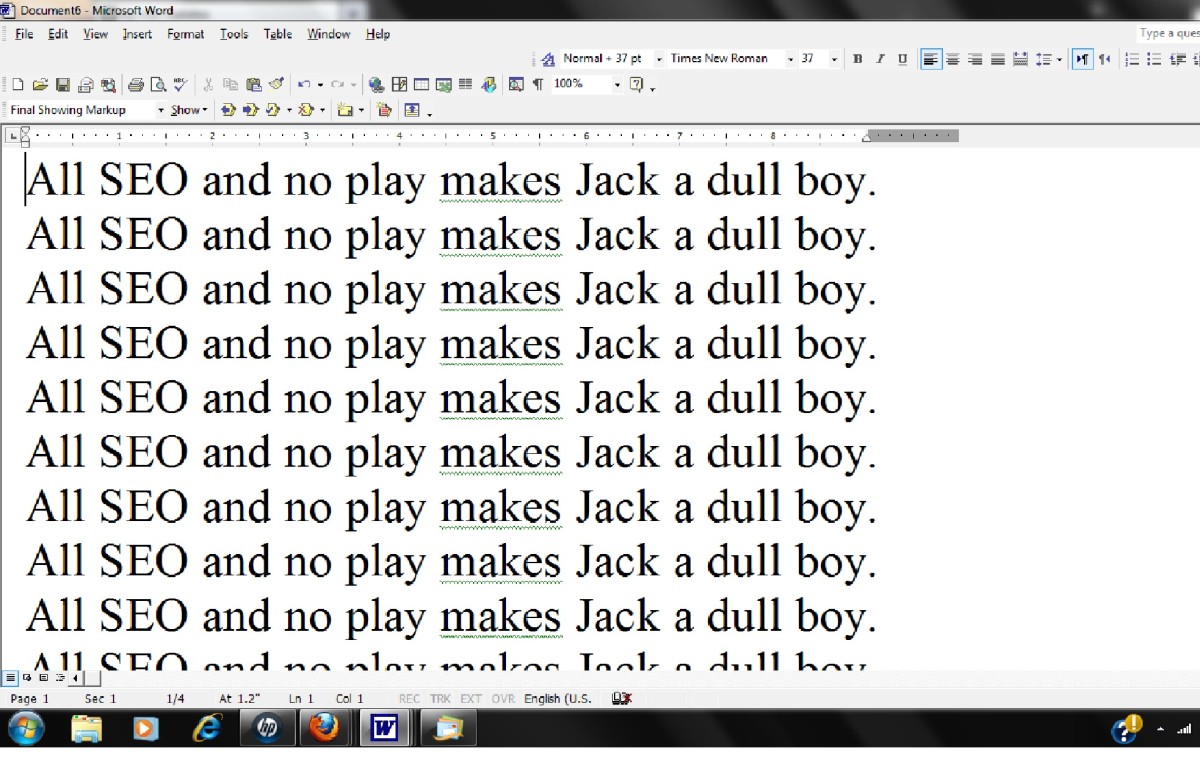Using your to do list to break up the large projects, in this case seo for your site
working on a big project might be scary, I know it is for me. But what is the correct way to break it down? Since I'm in the Seo business I'll give an example of I use my to do list to check a new site. Think of it, someone comes to you with a site you never worked on. And you have no idea what has been done on it before. Now you have to guild the site to the top of the search results.
Step 1: the trinity, domain, on site and off site
most people thing there are only two steps here, But I divide it to three. I keep the domain apart from the on site for the simple reason that it might have been used before. What is if had? If your domain was used for Spam in the past Google might have black listed it. If that is the case you won't get it ahead in the results no matter how hard you try.
How do I check your domain?
First I got to way back machine. There I can see exactly how old you domain is, and what has been done with it in the past. I can also see what you have been doing with your site. What your older versions look like and how you moved information around to focus your target audience.
Then I check you link profile. I also check your profile when I check your off site work. Here I'm looking for your link, domain, server breakdown. Again if you get a lot of links from footers or from sites hosted on the same server I'll find it and so will Google. Again this is just to make sure your not black listed. If you might be black listed in one of these areas I will not accept your site.
Now that we got the domain out of the way it's time to focus on the two big time consuming projects. What has been done on site and off site.
Step 2: on site optimization
on site optimization is a big part of the process if not addressed correctly you might see your site jumping up and down the ranking with no idea what to do about it. I love it when people refer to this as the Google dance. Google is a computer program and it works just like any computer program. If you ever defragmented your hard drive you would see the same thing happening. Your computer moves some data around for a short time. Then when it has the needed space it starts rearranging the data. Still seems different from what Google is doing? I didn't think so.
I have seven areas I focus on in the on site processes, and they are:
- 301 and 302 redirects
- canonical tags
- titles
- descriptions
- page importance and internal linking
- keyword usage
- menus and categories
301 and 302 redirects
I use screaming frog seo spider to check your sites redirects. Just in case you don't know what a 301 0r 302 redirects are, I'll explain. A redirects send the visitor from one page to another, this doesn't bother more visitors (and most of them will not even know this has happened). But it will bother Google, allot! I thinks that the reason is that time it wasts. When you scanning the entire Internet over and over again this can get really annoying.
This is pretty straight forward but it can be a lot of work. I basically fix all the links on your site and rescan it to make sure there no more redirects.
Canonical tags
The way a computer works is very different from the way a web browser works. And since we work with both to surf the web we have to find a common denominator for both. Scratch that, there is none. This is why the canonical tag was created. It's function it to let Google know what is the original page. So when Google decides to clean out it's index and throw out useless pages it won't throw this one out.
Again I go through all you pages and make sure the canonical tags are just right. Starting to get a feel of why I would use a to do list?
Titles and descriptions
the titles and descriptions of you pages have to be unique. Even if you are targeting the same keyword the titles and descriptions have to be different. Again screaming frog does an awesome job and makes mine so much easier.
Page importance and internal linking
Page importance is determined by the amount of on site links pointing to that page. Usually the page getting most of the links is the homepage. Not what I'm looking for. I make sure the pages focused on your top keywords have the most links pointing to them. This does two things, first it makes sure Google can see that those pages are more important and second those pages will show up in the site links on Google's search results. Not that it will not add site links if there aren't any, it will direct Google to assign those pages as site links when your site is big enough to have site links.
Keyword usage
For some reason people still think that keyword density is a thing, let me be clear IT'S NOT! It will more likely get you banned from Google then help you rank. The way to use keywords today is to have a subject written around them, which makes them more natural. See the way I work? I don't try to make something “seem natural” I make sure it is. Everyone at Google has a PHD and since I don't, I try not to play games with them. I would like to see your keywords in the title, h1 and in the copy (just once or twice) and only if it is natural.
Menus and categories
let's make sure we're on the right page here. Keywords are typed into Google when someone is looking for you or your products. Makes sense that they would be in the categories, people don't like to run around your site with no clue where they are going. Make it easier for them to find their way and they will keep coming back.
step 3: off site optimization
off site optimization is mostly brand awareness and links. I would prefer to work with brand awareness more them links, I bereave that the links will come as I go along I just have to get my brand out there. Building your brand will take time and a lot of work but it well worth it. When I finish writing that article I will link to it here. For now lets just break down the process you have to go trough to do this efficiently.
Your to do list should be setup like this:
domain
- check domain on way back machine
- check link profile on majestic seo
on site
- check redirects
- check canonical tags
- check titles
- check descriptions
- check page importance
- check keyword usage
- check menus and categories
And keep going from here. Seeing all this information in front of you will make it easier to focus and make you a lot more efficient. Just a little tip, get some to do list software for your smart phone. Most of your best ideas will come to you when your not at your desk. When you taking a shower or a walk or even playing a video game (this is a big one for me). I use both Siri and Trello.
Siri is very useful when I'm taking a walk and need to add reminders. It's very handy to talk to my phone and be instead of having to stop and write down whatever is going through my mind. and Trello is more helpful when I need to break down my tasks. Like when I need to research something and when it's on my blog so I don't write the same post all over again.
In my next article I will explain how I tackle off site work. I hope you enjoyed this article and I promise to add another on soon.








